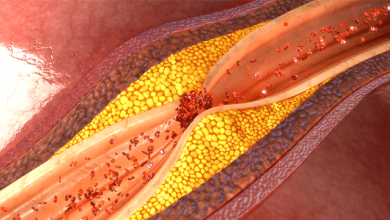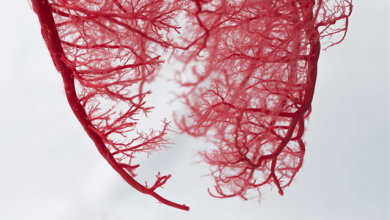Search results
Author(s):
Barry Hennigan
,
Keith Robertson
,
Colin Berry
,
et al
Added:
3 years ago
The original studies of coronary balloon angioplasty performed by Andreas Gruentzig attempted to employ physiological guidance by measuring trans-stenotic gradients with over-the-wire angioplasty catheters.1 However, these catheters were of such large calibre that they contributed to the stenosis being assessed and in addition, measurements were made at rest as the importance of assessing…
View more
Author(s):
Sayan Sen
,
Justin E Davies
Added:
3 years ago
The use of physiology to guide revascularisation in patients with coronary disease has been demonstrated to improve clinical outcomes and reduce costs.1,2 Despite this, its adoption into clinical practice is very low,3 moreover, when it is employed it is used simplistically – only to determine if the vessel is ischaemic or not.
Recently, several new indices of stenosis severity have been…
View more
Author(s):
Stephan Achenbach
,
Tanja Rudolph
,
Johannes Rieber
,
et al
Added:
3 years ago
The invasive measurement of fractional flow reserve (FFR) can determine the haemodynamic relevance of coronary artery stenoses. Determination of FFR is recommended in coronary artery stenoses with a luminal diameter narrowing between 50 % and 90 % if no non-invasive proof of ischaemia is available.1 To measure the FFR of a given coronary lesion, a wire or a microcatheter equipped with a…
View more
Author(s):
Matthew Price
Added:
7 years ago
Author(s):
Tom Ford
,
Colin Berry
Added:
3 years ago
Ischaemic heart disease persists as the leading global cause of death and lost life years in adults.1 Angina is a common clinical presentation of ischaemic heart disease related to a supply:demand mismatch of myocardial blood flow, typically provoked by exertion or stress. Invasive coronary angiography is the reference test for angina and identifies obstructive coronary artery disease (CAD) as a…
View more
Author(s):
Daniel Tze Yee Ang
,
Colin Berry
Added:
2 years ago
Author(s):
Lavinia Gabara
,
Jonathan Hinton
,
Julian P Gunn
,
et al
Added:
3 years ago
The optimal assessment and management of patients presenting with recent onset chest pain is achieved by acquiring information about the coronary anatomy and physiology, enabling decisions to be made based upon evidence of ischaemia at a patient-level and at lesion-level. There are robust data indicating that the visual assessment of stenosis severity alone does not provide enough information…
View more
Author(s):
Gérard Finet
,
Gilles Rioufol
Added:
3 years ago
“Nothing comes to us except falsified and altered by our senses.”
Michel de Montaigne (1533–1592)
Coronary angiography (CA) has been performed in cardiology centres for more than 50 years. The diagnosis it provides soon became the gold standard in coronaropathy. It is a purely anatomic diagnosis, and this approach has made a deep mark on cardiology, although the need for a prior non-invasive…
View more
Author(s):
Samer Fawaz
,
Sarosh Khan
,
Rupert Simpson
,
et al
Added:
1 year ago
Author(s):
Shah R Mohdnazri
,
Thomas R Keeble
,
Andrew SP Sharp
Added:
3 years ago
Fractional flow reserve (FFR) is an index used to describe the physiological significance of a coronary stenosis. It measures the pressure drop under conditions of maximal hyperaemia between the aorta and a selected vessel location distal to an angiographic lesion.1 Several FFR studies have identified patient groups in whom coronary stenting is associated with improved outcomes when compared with…
View more
















